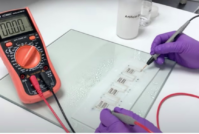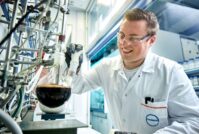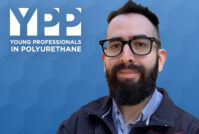look what we did!
Category: 2014 Polyurethane Technical Conference, Innovation Bonds
Peter Shepard, Chief Business Officer for Novomer Inc. shared details about their new product.
Novomer uses chemistry to reboot a more renewable manufacturing world
Manufacturing technology has gotten a reboot, thanks to Novomer Inc. The commercial introduction of Novomer’s Converge® polypropylene carbonate (PPC) polyols chemistry for use in polyurethane formulations has given innovators a new building block from which to design and create new products. From adhesives to coatings, sealants to elastomers, and rigid and flexible foams applications, Converge is taking on renewable resources in an innovative way. We spoke with Peter Shepard, Chief Business Officer for Novomer Inc. about the new product. Find out more in the interview below.
Q. What are Converge® polyols and how did the idea for it happen?
A. Our polyols are roughly 50 percent by weight carbon dioxide. The benefits from using carbon dixoide as a feedstock is the polyols have high performance and can be used in applications, from foams to coatings. The essential performance features of Converge Polyols are that they build strength in polyurethane systems. Coatings can be hard and abrasion resistant, foams with high load bearing capacity, super strong and environmentally resistant adhesives. CO2 is extremely cost effective relative to petroleum-based feedstocks. Conventional polyether polyols are 100 percent proplylene oxide, for example and we replace up to 50 percent of the propylene oxide with cost effective CO2. Our creation was a confluence of a few things. Cornell University had developed the technology to use CO2 as a feedstock and then we identified the polyurethane market as an attractive marketplace for this technology. We adapted the technology and our manufacturing process to the production of polyols for polyurethanes. Last but not least, the benefits of Converge polyols is the utilization of waste green house gas, if you can prevent CO2 from going into the atmosphere that’s a good thing. You can put the greenhouse gas permanently into the backbone of our polymer that sequesters it. Chemically, we can permanently lock it in.
Q. Did anything in particular inspire you?
A. Waste CO2 is plentiful. The chemical industry is always looking for plentiful and low-cost feedstocks. Waste CO2, however, is inert, it doesn’t want to react. For years, people have been looking at it as interesting raw material but no one has been able to figure it out how to use it at scale, or large volume, as feedstock in a cost effective way. This was an inspiring challenge.
Q. Novomer has innovated technology that relies on waste carbon dioxide while reducing the carbon and energy footprint of the product. How does Novomer balance creating high quality innovations with energy efficiency?
A. It’s quite easy. Carbon footprint and energy efficiency is natural feature of our technology. Mostly we focus our efforts on tailoring the product to meet application requirements as no matter what we do we always incorporate waste CO2 into our products.
Q. What was the biggest challenge you overcame?
A. Getting people to recognize a new material and be open to it. They want to just throw it into their existing formulation and see if it works. People need to be creative and patient and persistent when using a new material. Formulated correctly, Converge Polyols create outstanding benefits. You have to step back and rethink a bit how you approach formulation in order to take advantage of the performance.
Q. What is the next step after Converge®?
A. We’re just scratching the surface of the technology. We are investing in programs developing similar products for flexible and rigid foam, much larger volume applications. Stay tuned.
Read more on polyurethanes:

























